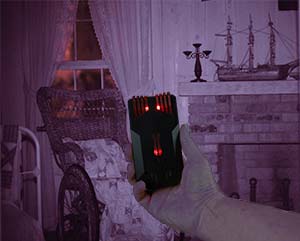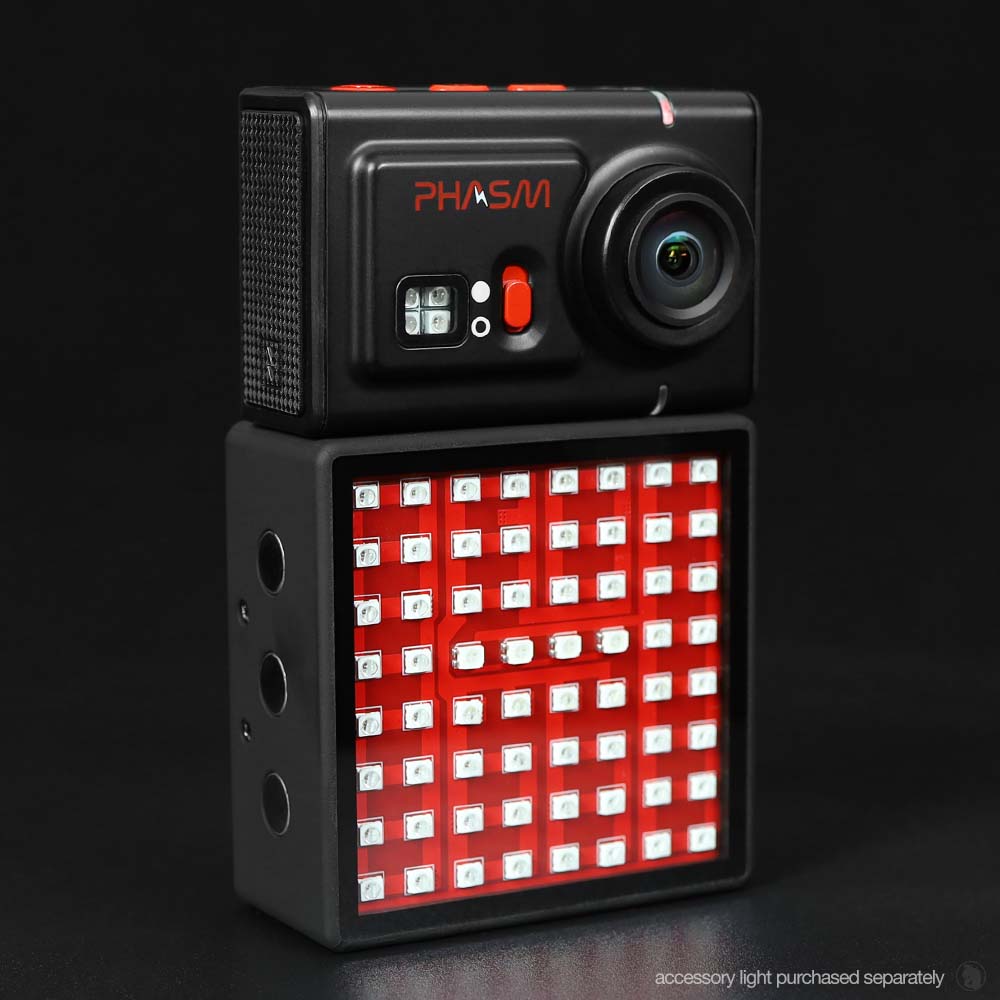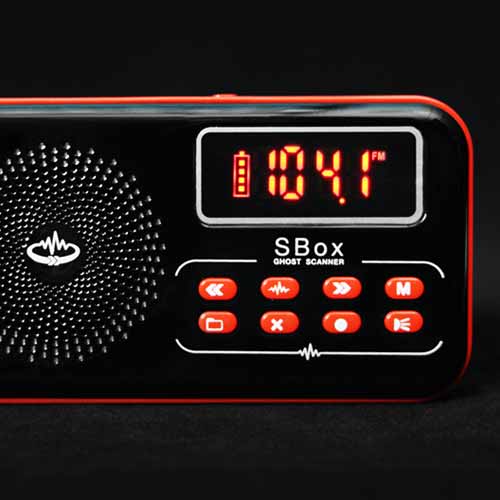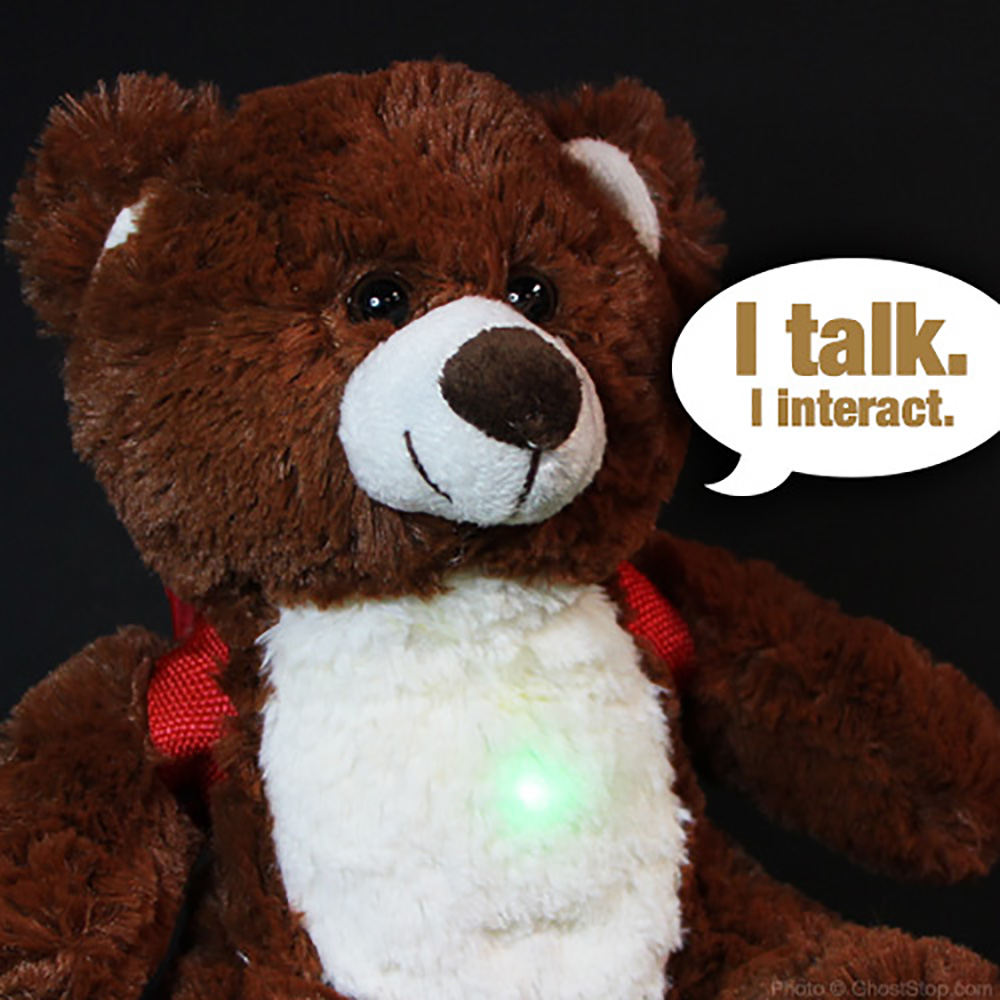
Your source for information, tips, news and reviews on the latest and most popular ghost hunting tools. We are long-time investigators who have used, abused and purchased just about everything this field has to offer. We’re here to provide you with our suggests for the best items to use, how to use them and where to save.
For starters, below is a quick check list of equipment you should have on every investigation for capturing evidence and documenting your investigations. Naturally, you do’t have to have every piece of equipment on this list. But the more backup you can have for each reading the better. For acceptable evidence you should always be armed with a way to document video, audio, temperature, time, and location of any paranormal activity.
Our Top 10 Ghost Hunting Equipment Picks
See our TOP 10 Picks for ghost hunting equipment for 2022.
A full spectrum video camera is a great choice for your ghost hunting camera. The NEW Phasm Camera ghost hunting camera is compact like a GoPro and packs great features, flexibility and quality in a small package.
The SBox Ghost Scanner is the newest spirit box to the paranormal investigation field. It has more features than any other ghost box and the only one with direct-feed recording built right in.
BooBuddy the coolest (and cutest) ghost hunting tool out there is the first interactive ghost hunting bear with so many tools packed in. It actually reacts to changes in the environment with speech. That’s right. It talks! It detects changes in the environment and SPEAKS to respond to the entity. It really is quite amazing.
Ghost Hunting Gear Check List
What should I bring on a ghost hunt?
Here are some tips and suggestions for what equipment to have on hand for a successful and safe paranormal investigation from the basics to the more advanced. As you grow, so will your arsenal.
The Basics:
- Flashlight: Safety first! Since most paranormal investigations take place in low light environments, close quarters and in the evening, have yourself a flashlight. A red light is best as it helps preserve proper vision. But any light will do to keep you from stubbing your toes.
- Audio/EVP Recorder: An audio recorder is considered mandatory for any ghost hunt. It’s purpose is many-fold not only to record potential EVP (electronic voice phenomena) as evidence but also to document your entire investigation. Make sure to verbalize what you are doing while recording so you have an audio note, relay the time and tag any events that take place. Recorders come in many forms from high-end recorders to the newer wrist bands (which are especially ‘handy’). For such a small recorder, you’d might be surprised at how great the quality is.
- Watches: Each team member should have a watch and they should all be synchronized with the other members watches and time codes on the camera equipment. Sometimes this is the most challenging part of a hunt. TIP: The wrist band EVP recorder has a ‘watch’ mode so it gives you the time as well.
- Walkie-Talkie: Always useful, but try to get one that is hands free, preferably with headsets. Today, you can actually link a team together through conference call on cell phone if everyone has the minutes.
- Paper and Pen: They don’t run out of batteries and they are cheap, and you can record a written log. It’s a good idea to have a secretary recording the time and description of events as you go, because this represents the closest you can get to human memories, without the filter of technology.
- Cases and Holsters: Of course you’ll need something to put all this equipment in for carrying to the investigation and keep your hands free during the hunt. The key is to keep the sophisticated equipment protected on the way in. Go with a hard case and, if possible, one with foam on the inside. There are also holsters and vests you can wear during the investigation to keep all your tools at the ready. While vests can be quite cumbersome and a little intimidating to a client if you come in armed like a SWAT team, the smaller leg holsters or waste pockets can be just as effective without all the fuss.
- First Aid Kit: Ya never know!
Must-Have Sensors and Documentation:
- Video Camera: Like an audio recorder, a video camera is a great way to document your investigation while also capturing potential evidence. You can carry one with you, mount it to something or set it on a tripod to record all night. Camera technology has gotten smaller, faster and increased greatly in quality over the last few years. Today, you can get an amazing 4K video camera, the size of a GoPro quite inexpensively. A more recent advancement is also the addition of 360-degree cameras that capture the entire room. Be sure to look for ‘Full Spectrum’ or ‘Night Vision’ to make sure you get one that can see in the dark. Full Spectrum is, essentially, night vision plus and is the preferred method for capturing as much light as possible during dark investigation settings. (see article: Night Vision vs. Full Spectrum)
- EMF Detector: EMF Detectors pick up electronic fields at a variety of frequencies. One of the most common theories within the ghost hunting field is that entities may have the ability to manipulate electromagnetic fields. So, detecting those changes is key for investigators. This is one piece of equipment that every ghost hunting expedition should have and range from fairly inexpensive to a few hundred dollars for most sophisticated and feature-heavy models.
- Digital Still Camera: It’s all about the Megapixles! – The higher the resolution the more you will be able to zoom in later on when you are analyzing your photos. Keep in mind that while most video cameras also have the ability to take still photos, a dedicated still camera will generally take a much better photo.
- Thermometers: As with EMF, theories suggest that a ghost might have the ability to change air environmental changes, such as temperature. Given that, a thermometer is how you would detect these changes. Thermometers come in a few different forms including ambient detection or ‘ranged’. Generally, what you really want is an ambient thermometer. This senses the temperature of the air around the meter, itself. A ranged thermometer only reads the temperature on the surface of an object. As such, that is only really good for detecting the source of the change, such as air vents or leaks in windows and insulation. Some thermometers provide both readings and some EMF meters have on-board temperature detection as well.
- Motion Detectors: These can really give you a heads up and they are not expensive.
As you grow, you’ll want to explore more:
- Thermal Camera: These are a great pieces of gear, because they essentially allow you to see changes in temperature from a distance on a visual color heat map. It’s a great way to be able to ‘see’ temperature forms. Many will refer to this as a ‘FLIR’ though this is really the most common and trusted brand name.
- Trigger Objects: Trigger objects are a great way to help interaction. There are also some triggers objects out there that also include some investigation tools within them such as an EMF meter that lights up to let you know something is nearby. BooBuddy ghost hunting bear, is a prime example of a trigger object that is purposed to attract, sense changes in the environment then attempt a line of communication. It’s really quite amazing with all the tools inside of it. It’s like having a full investigator on your team.
- Lighting for Cameras: Proper lighting for cameras and camcorders is very important. Though the term ‘night vision’ implies that the camera can see in the dark, what it really means is that it can see invisible light. So, you will need an infrared (IR), ultraviolet (UV), full spectrum or visible light source. If you are using a great full spectrum cam, the options are really wide open. Match the right camera up with the right light and you will have yourself an powerhouse setup.
- Misc. Camera Gear: You’re going to want a decent camera bag and tripod, extra batteries or battery pack and plenty of memory cards. Some of the smaller ‘POV’ style cameras also have a wide range of mounting accessories such as head straps, chest harnesses and car mounts.
- Digital Image Editing Program: Sometimes by adjusting contrast, shadows and highlights or colors, you can find things in a photo you didn’t know were there. Photoshop is my favorite. And remember you can give your video the same treatment with the color correction tools in a Video Editing Program like Final Cut Pro or Adobe Premiere.
Comments:
I just like the helpful info you supply for your articles. I?ll bookmark your weblog and take a look at…
You can find the prices for all the products above via the links provided.
You can find a few at GhostStop.
I’m looking for a faraday cage.
Now, there’s a fantastic list for Christmas. I have to tell mom! hehehehe
oh I didn’t think about a kit. that seems like the way to go.
Man, this really helped! My son loves this stuff and there’s some great choices here. Thanks!
Brilliant Collection!
lots of items i want lol




Are you still alive?